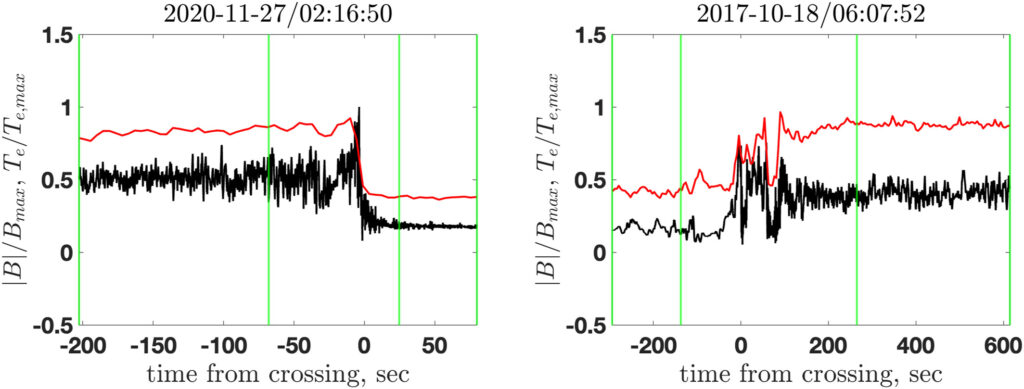Supernova remnant (SNR) shocks are the highest Mach number non-relativistic shocks in electron-ion plasmas. These shocks are the most efficient particle accelerators in space. SNR shock parameters are inferred from measurements of electromagnetic radiation from heated and accelerated particles. Temperature of the shock heated electrons is one of the most important parameters in supernova remnant shocks. Knowledge of the downstream electron-to-ion temperature ratio or of the ratio of the downstream electron temperature to the incident ion energy is crucial for understanding physics of the very high-Mach number SNR shocks. Heliospheric shocks have substantially lower Mach numbers than SNR shocks but can be extensively studied in in situ observations with further extrapolation of the findings to higher Mach numbers. Magnetospheric Multiscale mission observations of the Earth bow shock are used to analyze dependence of the electron heating on the shock Mach number. It is found that the ratio of the downstream electron temperature to the incident ion energy decreases with the increase of the Mach number. At high Mach numbers this ratio and stabilizes at about 2.5%. The electron-to-ion temperature ratio stabilizes at about 10%. The peak electron temperature occurs at the overshoot maximum, further downstream electrons cool down. The mean ratio of the 4.5 s averages of the downstream and maximum electron temperatures is 0.85. Electron heating does not follow the thermodynamic adiabatic law. The heating and cooling behavior implies that the energy is provided by the overall cross-shock potential while small-scale electric fields rapidly isotropize the electron distribution.

Full Article:
Gedalin, M. (SHARP), Golan, M., Vink, J. (SHARP), Ganushkina, N. (SHARP), & Balikhin, M. (2023). Electron heating in shocks: Statistics and comparison. Journal of Geophysical Research: Space Physics, 128, doi: 10.1029/2023JA0316
License: CC BY-NC-ND 4.0





